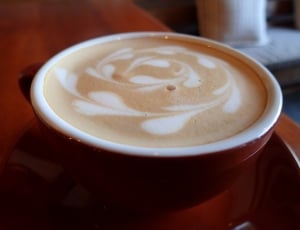 coffee grinding chart - You may print or take a screenshot of this coffee grind size chart so you can refer to it when you encounter an unfamiliar brew method. Conical burr grinders essentially crush the coffee beans into a consistent grind with no extra heat. Extra fine coffee is perfect for espresso. This grind is usually used for espresso and has a sugar-like consistency. For example, using a medium-fine or fine grind for an extraction method like the French press.
coffee grinding chart - You may print or take a screenshot of this coffee grind size chart so you can refer to it when you encounter an unfamiliar brew method. Conical burr grinders essentially crush the coffee beans into a consistent grind with no extra heat. Extra fine coffee is perfect for espresso. This grind is usually used for espresso and has a sugar-like consistency. For example, using a medium-fine or fine grind for an extraction method like the French press.
Coarse Grind is also known as French Press grind, with an appearance similar to sea salt. For a cup of AeroPress coffee, you'll want a medium fine to fine grind, depending on how long you brew. In fact, a cup of regular drip coffee could have more caffeine content than a shot of espresso. You are probably familiar with it because this is the size most pre-ground coffee beans for espresso come in.
If that sounds familiar, that's because most pre-ground coffee is sold as espresso grounds. The fine grind is your standard size for pre-ground coffee and is about the size of granulated sugar. But you may want to experiment since the grind size is one of the few variables you can control in a drip machine. Use this size when making espresso or an Aeropress with a one to two minute brew time.
About the size of table salt, use a medium-fine grind in your cone-shaped pour-over brewer (e.g. Hario v60) or your Aeropress when brewing for two to three minutes. If a cup of under-extracted coffee seems sour, acidic, or salty, you'll know that you need to do a finer grind the next time you brew to better balance the powerful flavors. You want to know the extraction yield% when the refractometer measures a 10% TDS.
By now, you know the size of your coffee grounds is extremely important to the brewing process. A blade grinder is basically a glorified food processor, using blades to chop up the coffee beans and produce an uneven mess of coffee grounds. The fast-spinning blades also produce heat, resulting in overcooked coffee. 1. Match your grind level to your coffee maker. Since grind size is so important to your coffee's taste, the type of coffee grinder you use can make all the difference.
An extra course grind size is recommended for use with cold brew coffee (typically the largest setting of a burr grinder). What is the best Chemex grind size? A Chemex filter is thicker than your standard paper cone-shaped pour-over filter, how to work a bunn coffee maker making a coarser grind necessary so the water can flow more freely and avoid over-extracting the coffee by increasing the brew time. Using a medium-coarse grind is best for Chemex coffee brewing (similar in size to sea salt).
Of course, the coffee grind chart can only take you so far. Of course, that means you want all of your coffee grounds to be the same size. You can achieve the same full flavor in your coffee, but one that's brighter and clearer than French press coffee. What's the best French press grind size? You'll also want to grind medium-fine when using a Moka pot. The Moka pot is the closest you can get to making espresso without an espresso maker, which is a good way to remember how fine to grind your beans - finer than a regular coffee, but not quite an espresso grind.
It entirely depends on your preference and the way you brew your French press. The best way to experience it is to grind and brew green coffee. The extraction rate is slightly faster than what you would experience with a medium grind. You can now enhance your coffee experience each morning with the Primula Coffee Grinder! You'll need to do your own experimenting to perfect your coffee grinding and brewing.
The size of your grinds will vary depending on your brewer, filters, and taste preferences, so you'll need to experiment with your pour-over brewer to find the right size for you. Any coffee expert will tell you a burr grinder, specifically a conical burr, is better than a blade grinder. When we take whole coffee beans and run them through a coffee grinder, the coffee we end up with- the tiny pieces of cut-up coffee- this is what we call coffee grinds.
By not being a synthetically produced good, cleaning bunn coffee maker coffee beans fail to maintain consistent flavors for long. As discussed above, different grind sizes extract flavors and oils at a different rates. Since the flavors are easily dissolved with hot water, home bunn coffee makers this produces a coffee extract. It is simply referred to as brewing coffee since it involves a combination of ground coffee, water, and time. If you're interested in the science of it, check out Beanground's more in-depth explanation of coffee acidity.
Acidity is an important compound that lifts and completes the full potential of your coffee. It can either make or break the flavor of your coffee. As said before, grinding beans on your beans allow you to make the most out of your cup. Some common mistakes that people make when it comes to over extracted coffee is that they are brewing for too long, you use too much water in your brew, or you grind your coffee beans too fine.



 Lungo: Lungo is the much less-concentrated model of a single shot. Latte: A single shot for eight ounces. Once the espresso shot is pulled, all it is advisable do is add 2-three tablespoon scoops of milk foam. You'll be able to, after all, use the steaming wand supplied by the espresso machine to heat the milk to the boiling water, or you need to use the stove and a thermometer to scald the milk. Once the specified temperature and foam are met, you'll be able to flip off the steaming wand.
Lungo: Lungo is the much less-concentrated model of a single shot. Latte: A single shot for eight ounces. Once the espresso shot is pulled, all it is advisable do is add 2-three tablespoon scoops of milk foam. You'll be able to, after all, use the steaming wand supplied by the espresso machine to heat the milk to the boiling water, or you need to use the stove and a thermometer to scald the milk. Once the specified temperature and foam are met, you'll be able to flip off the steaming wand.